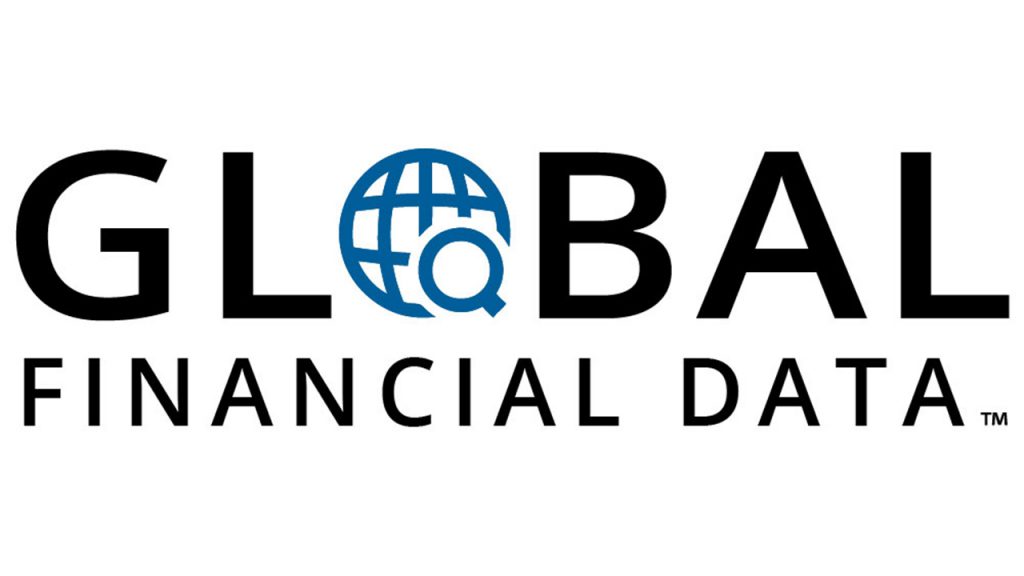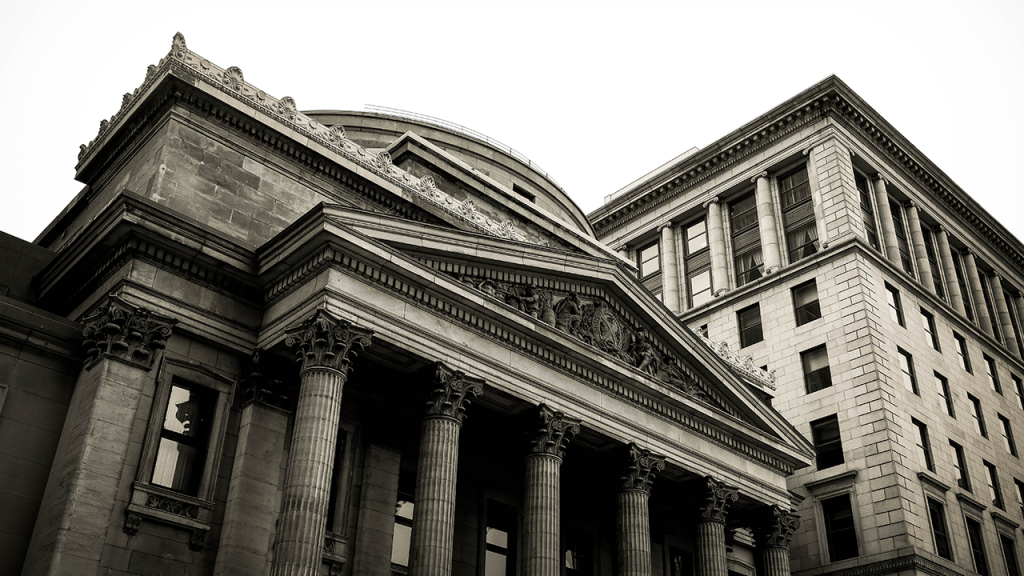 Global Financial Data has added four indicators of Global Warming. These four data sets use the Met Office Hadley Centre observations datasets for the World (HADCRUTGM), Northern Hemisphere (HADCRUTNM), Southern Hemisphere (HADCRUTSM) and Tropics (HADCRUTTM). Data are monthly and go back to 1850.
The HadCRUT4 near surface temperature data set is produced by blending data from the CRUTEM4 surface air temperature dataset and the HadSST3 sea-surface temperature dataset. These ‘best estimate’ series are computed as the medians of regional time series computed for each of the 100 ensemble member realisations. Time series are presented as temperature anomalies (deg C) relative to 1961-1990.
Rather than having someone tell you about Global Warming, check out the data for yourself.
Global Financial Data has added four indicators of Global Warming. These four data sets use the Met Office Hadley Centre observations datasets for the World (HADCRUTGM), Northern Hemisphere (HADCRUTNM), Southern Hemisphere (HADCRUTSM) and Tropics (HADCRUTTM). Data are monthly and go back to 1850.
The HadCRUT4 near surface temperature data set is produced by blending data from the CRUTEM4 surface air temperature dataset and the HadSST3 sea-surface temperature dataset. These ‘best estimate’ series are computed as the medians of regional time series computed for each of the 100 ensemble member realisations. Time series are presented as temperature anomalies (deg C) relative to 1961-1990.
Rather than having someone tell you about Global Warming, check out the data for yourself.
 Most people in the stock market have heard about the South Sea Bubble, the first stock market bubble, which took place in 1720, but few people realize that the South Sea Co. was also one of the first ETFs in market history. Many people have seen a chart of the stock rising from 100 to 1000 within a few months, then collapsing back to 100. But what happened after the stock price collapsed, and why did the stock price rise so suddenly and then collapse to begin with?
The South Sea Company was a British joint-stock company founded in 1711 as a public-private partnership to consolidate and reduce the cost of British national debt. The company had a monopoly of British trade with South America, and the potential profits from this monopoly were used to justify the rise in price of South Sea Co. stock. When it was discovered the profits would not occur, which they did not, then the price of the stock collapsed.
The South Sea Company was, in modern parlance, a debt-equity swap. The British government had increased its debt significantly as a result of the War of the Spanish Succession. The government debt was over £50 million pounds, or about 100% of GDP. Following in the footsteps of John Law, who had created the Banque Royale in France to reduce the French debt, the British government decided to do the same. South Sea Company shares were backed by government bonds, would pay 5% interest, and unlike British government debt, South Sea Co. shares would have the potential for increases in dividends as the South Sea Company profited from its monopoly. The British government benefited because it reduced its debt, and holders of British government debt could benefit from a higher rate of return and the potential for capital gains. The conversion of British government debt to South Sea Co. stock was a win-win. When things are too good to be true, they are. If the Securities and Exchange Commission had existed in 1720, they would have arrested everyone associated with the South Seas Co. since they broke almost every rule in the SEC book. Rumors about profits were spread, members of Parliament were bribed, shares could be bought with a small down payment or no down payment, shares could be purchased at the par price of £100 and sold at the higher market price, etc. Shares were sold to members of the government at the market price without them having to pay for the shares. When the price of the stock rose, the shares could be sold at a profit. This cost the “investors” nothing, made sure their interests lay with the South Seas Co., and insured profits to the supporters of the company. Even George I’s mistress was allowed to benefit from this scheme. The rise in the price of South Sea Co. stock led to numerous additional companies emerging to take advantage of the stock market bubble. Almost all of these companies became worthless, and this led to the passage of the Bubble Act in June 1720. The Act required that a joint stock company could only be incorporated by Act of Parliament or Royal Charter. The prohibition on unauthorized joint stock ventures was not repealed until 1825. The Bubble Act limited potential competition and drove the South Sea Co. stock price £890 in early June.
Most people in the stock market have heard about the South Sea Bubble, the first stock market bubble, which took place in 1720, but few people realize that the South Sea Co. was also one of the first ETFs in market history. Many people have seen a chart of the stock rising from 100 to 1000 within a few months, then collapsing back to 100. But what happened after the stock price collapsed, and why did the stock price rise so suddenly and then collapse to begin with?
The South Sea Company was a British joint-stock company founded in 1711 as a public-private partnership to consolidate and reduce the cost of British national debt. The company had a monopoly of British trade with South America, and the potential profits from this monopoly were used to justify the rise in price of South Sea Co. stock. When it was discovered the profits would not occur, which they did not, then the price of the stock collapsed.
The South Sea Company was, in modern parlance, a debt-equity swap. The British government had increased its debt significantly as a result of the War of the Spanish Succession. The government debt was over £50 million pounds, or about 100% of GDP. Following in the footsteps of John Law, who had created the Banque Royale in France to reduce the French debt, the British government decided to do the same. South Sea Company shares were backed by government bonds, would pay 5% interest, and unlike British government debt, South Sea Co. shares would have the potential for increases in dividends as the South Sea Company profited from its monopoly. The British government benefited because it reduced its debt, and holders of British government debt could benefit from a higher rate of return and the potential for capital gains. The conversion of British government debt to South Sea Co. stock was a win-win. When things are too good to be true, they are. If the Securities and Exchange Commission had existed in 1720, they would have arrested everyone associated with the South Seas Co. since they broke almost every rule in the SEC book. Rumors about profits were spread, members of Parliament were bribed, shares could be bought with a small down payment or no down payment, shares could be purchased at the par price of £100 and sold at the higher market price, etc. Shares were sold to members of the government at the market price without them having to pay for the shares. When the price of the stock rose, the shares could be sold at a profit. This cost the “investors” nothing, made sure their interests lay with the South Seas Co., and insured profits to the supporters of the company. Even George I’s mistress was allowed to benefit from this scheme. The rise in the price of South Sea Co. stock led to numerous additional companies emerging to take advantage of the stock market bubble. Almost all of these companies became worthless, and this led to the passage of the Bubble Act in June 1720. The Act required that a joint stock company could only be incorporated by Act of Parliament or Royal Charter. The prohibition on unauthorized joint stock ventures was not repealed until 1825. The Bubble Act limited potential competition and drove the South Sea Co. stock price £890 in early June.
 The stock for which Global Financial Data has the longest history is the Bank of England stock, or as it was originally known, the Governor and Company of the Bank of England.
The origin of the Bank of England lies in naval warfare. In 1694, the French had the strongest navy in the world and following the 1690 Battle of Beachy Head, England needed to rebuild its navy, but King William III lacked the resources and the credit to do so.
The stock for which Global Financial Data has the longest history is the Bank of England stock, or as it was originally known, the Governor and Company of the Bank of England.
The origin of the Bank of England lies in naval warfare. In 1694, the French had the strongest navy in the world and following the 1690 Battle of Beachy Head, England needed to rebuild its navy, but King William III lacked the resources and the credit to do so.
This problem was resolved by creating the Bank of England. In exchange for creating a limited liability corporation, which would act as a bank for the government and have the right to issue banknotes, the shareholders would loan the bank £1,200,000 at 8% interest. The Royal Charter was granted on July 27, 1694 and the £1,200,000 was subscribed in only 12 days. Over time, the Bank of England took on the responsibilities of managing the government’s debt, becoming a banker’s bank, controlling interest rates through discounting and establishing a base interest rate, having the exclusive right to issue banknotes within 20 miles of London, and then within the entire country, and the other duties that are now associated with a central bank.
The Bank of England was nationalized on October 29, 1945. Shareholders received £400 in bonds for each £100 in par value of bank stock with bonds paying 3% interest (as opposed to the 12% yield) with bonds redeemable at par on April 5, 1966.
The Bank of England’s stock traded for over 250 years before its nationalization. The stock participated in the South Sea Bubble of 1720, though only doubling in price rather than showing the ten-fold increase South Sea Stock enjoyed before collapsing. The Bank of England stock, along with East Indies Co. stock and South Sea Co. stock were the three companies whose shares were safe enough, because of their government connection, to trade regularly on the London Stock Exchange during the eighteenth century. Until the rise of canals and the liquidity created by the Napoleonic Wars, stock trading remained almost non-existent between 1720 and 1800.
Only British government bonds were safer than Bank of England stock; however, Bank of England stock had the potential for dividend increases that the government stock did not. Although the dividend fluctuated in its first dozen years, the dividend settled down to infrequent changes after the 1720 South Sea Bubble.
 Since I grew up in Dallas where the old Dr. Pepper plant was located on Mockingbird Avenue (now demolished), I have always been a Dr. Pepper fan, and though not everyone refers to it as the elixir of life as I do, it is still popular among those with discriminating taste like me, especially if you grew up in Texas.
Since I grew up in Dallas where the old Dr. Pepper plant was located on Mockingbird Avenue (now demolished), I have always been a Dr. Pepper fan, and though not everyone refers to it as the elixir of life as I do, it is still popular among those with discriminating taste like me, especially if you grew up in Texas.
Dr. Pepper has gone through several corporate transitions. The Circle “A” Corp. which had the exclusive right to bottle Dr. Pepper went bankrupt in 1923 and reemerged as Dr. Pepper Co. after incorporating in Dallas in 1923. The Dr. Pepper Co. was acquired by Forstmann and Little, a New York Investment firm, in February 1984. Dr. Pepper merged with Seven-Up in 1986 to form the Dr. Pepper/Seven-Up Companies which went public in 1993 only to be Cadbury Schweppes plc in June 1995. Cadbury Schweppes merged Dr. Pepper/Seven-Up with the Snapple Group to form Dr. Pepper Snapple Group, Inc. in 2007 which went public in May 2008 and still trades on the NYSE.
The first Dr. Pepper shares, which traded on the St. Louis Stock Exchange and OTC before moving to the NYSE on March 18, 1946, had two spectacular moves. The first move occurred between 1934 and 1937 when the stock made a 32-fold move as the company pulled out of the Depression. Since this spectacular move occurred before the stock traded on the NYSE, very few people are aware of this huge recovery in the stock price. The stock traded sideways for the next two decades before making another fabulous rise in the 1960s. Between 1960 and 1972, Dr. Pepper Stock made a 64-fold move. Even though Dr. Pepper wasn’t one of the “Nifty Fifty” stocks from the 1960s, it should have been. Between these two moves in the 1930s and the 1960s, Dr. Pep
 per made a 480-fold move, making it one of the best-performing stocks of the twentieth century.
per made a 480-fold move, making it one of the best-performing stocks of the twentieth century.
Unless you have the complete history of Dr. Pepper to see how it performed prior to joining the NYSE in 1946, you wouldn’t have known that Dr. Pepper had already made one spectacular move, had built a 25-year base, and was ready to join the Hall of Fame of Outstanding stocks. True stock analysts shouldn’t only worry about the survivorship bias that comes from ignoring delisted stocks, but from the exchange bias that comes from ignoring the pre-NYSE history of a stock as Dr. Pepper clearly illustrates.


